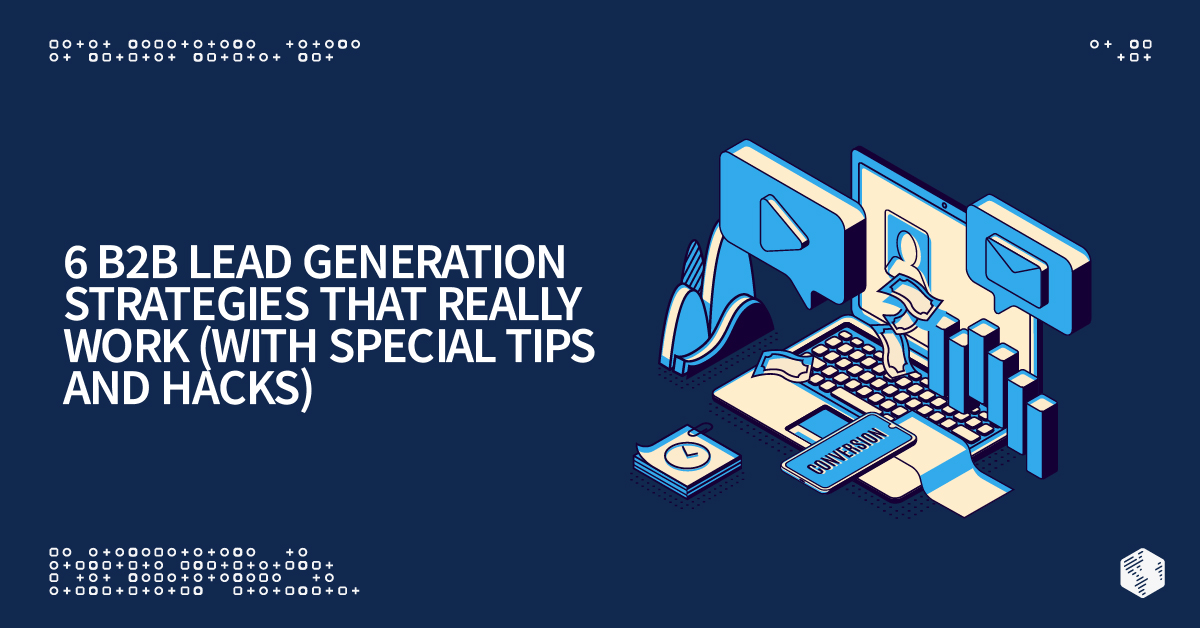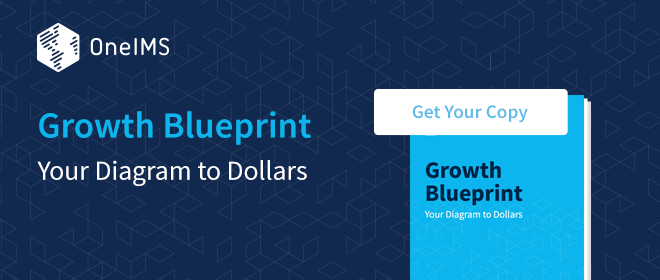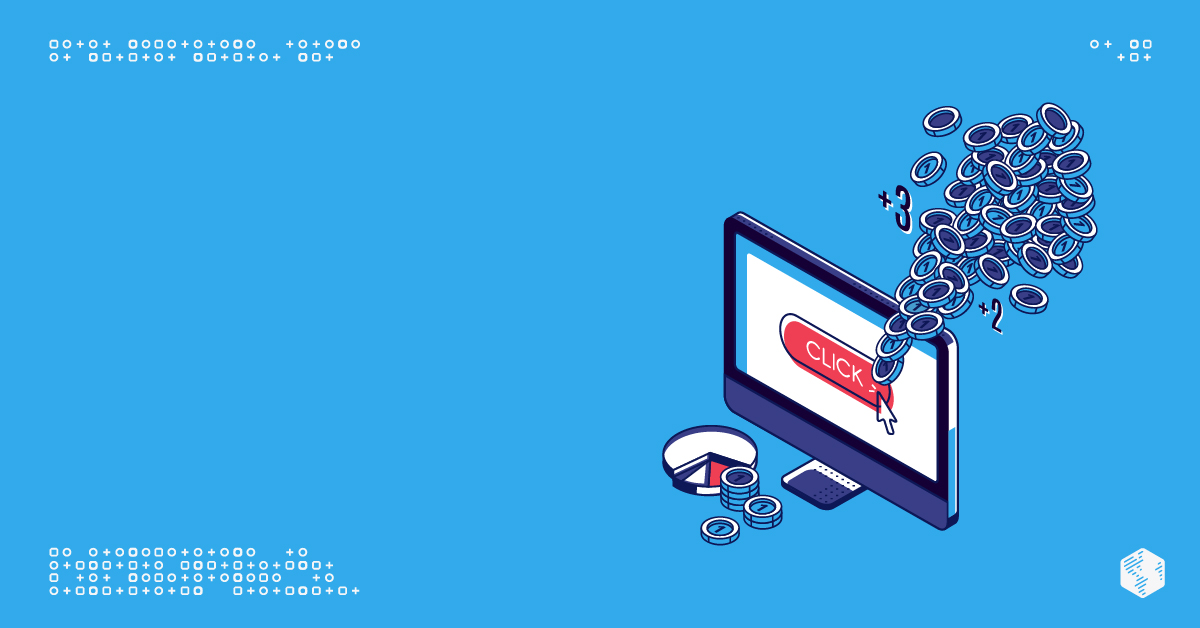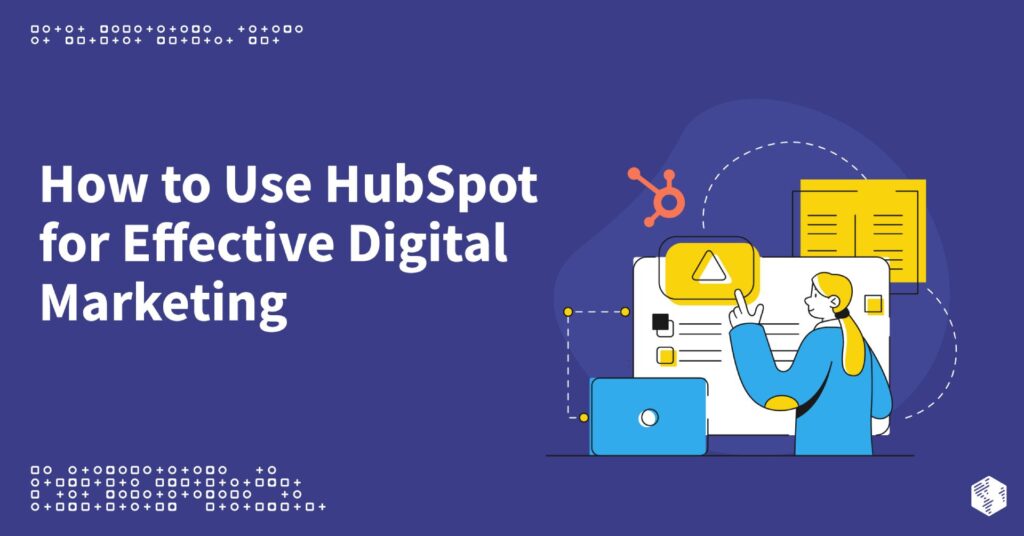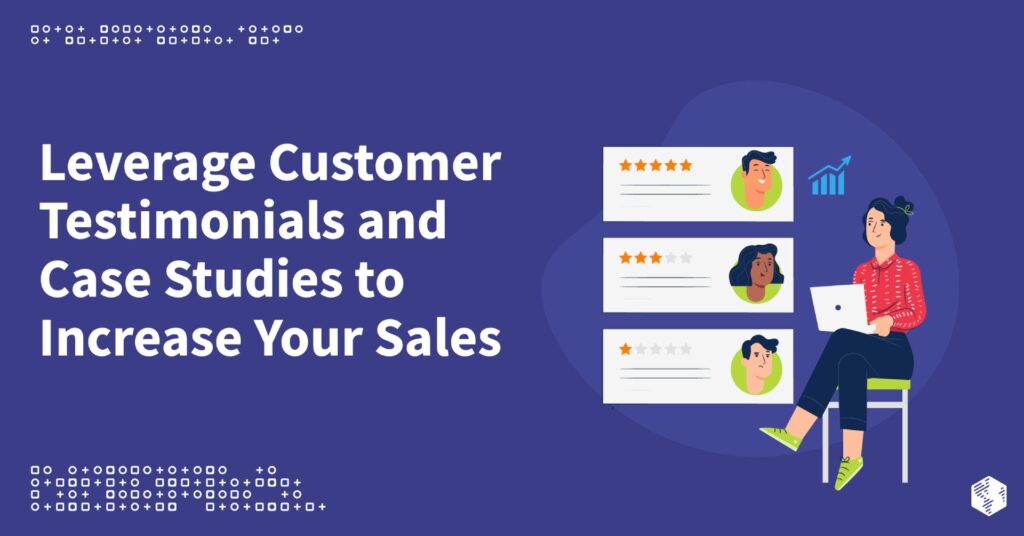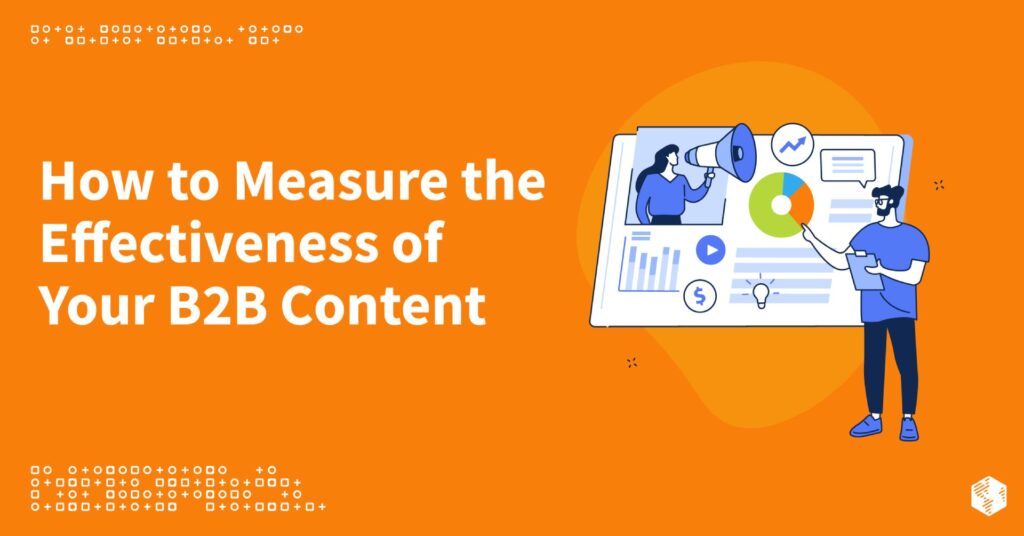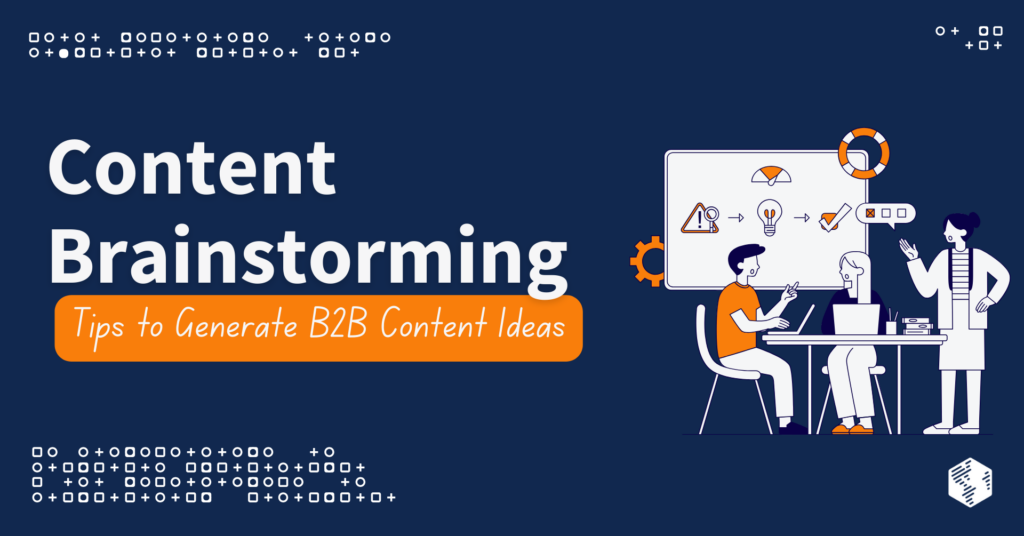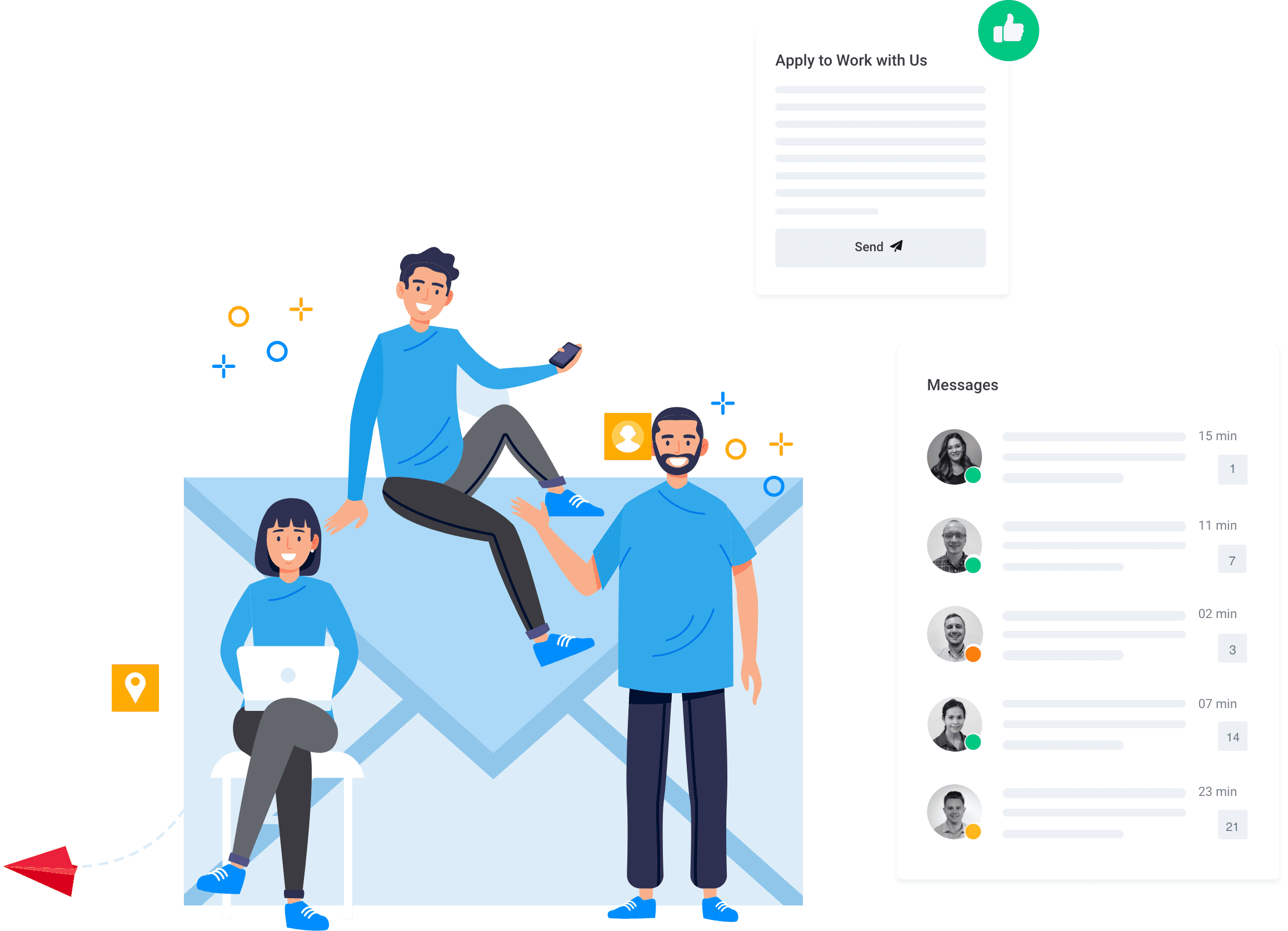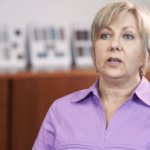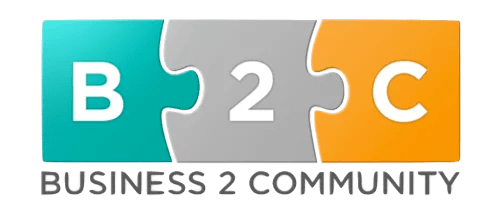“Lead generation is a piece of cake”.
Said no B2B marketer ever.
What makes it even more difficult is the changing marketing landscape and the emerging technologies that are disrupting all kinds of businesses. On top of these are the cautious buyers and the battle-ready competitors.
The hordes of misinformation regarding – a) contradictory research on the best lead generation strategies for B2B, and b) misleading case studies about strategies that worked for ABC organization – doesn’t help either.
The fact is you need to morph and mold the existing strategies into one that works for your specific industry, product, and customer base. There is nothing like ready-to-use when it comes to lead generation strategies. It is often trial-and-error experimentation that would require time and research.
The biggest proof that there are no simple, straightforward “best” lead generation strategies is this chart created and shared by HubSpot.
Do you see what is the biggest source of leads? Yes, it is “Others”.
Know what this means? Even the experts with a mine of data cannot figure out the “best” lead generation strategies.
However, we are not here to discourage you. Our job is to guide you in the right direction. What we are saying is: Don’t follow. Instead, lead in your lead generation techniques. Know about the different lead generation strategies that work and then make them your own by shaping them to fit your industry, business, and buyers.
We are sharing the 6 best B2B lead generation strategies for B2B businesses and some practical hacks and tips on how you can make them work specifically for your B2B business.
But first, let us start with the basics.
What is Lead Generation?
When a prospective buyer shows interest in your product, that buyer is your lead. However, there are many steps before you can reach this point and also after a lead qualifies for sales. These steps are clustered into what is called a funnel. The middle of the funnel is where your business generates leads.
The steps leading to this point are:
- Creating brand awareness – How do you expect people to turn into leads if they do not even know about your business? So, this is what happens at the top of the funnel. You go all out to let your target customers know about your business, your product, and how you expect to solve their problems. The biggest aim of this step is to attract prospects to your business.
- Engage – The prospects are the people who are potential leads. They are the ones who are interested in your business. Once they reach this stage, you need to engage them. A good informative piece of content or an event might attract a few prospects but if they do not engage with your business, they will leave and the entire point of the last step will go to waste. You have to keep these people interested with information about how your business can help solve a problem they are facing. If you can get this step right, the prospects will finally move to the middle of the funnel and become leads.
It is the job of the marketers till this point, from here on the leads are the responsibilities of the sales team to initiate conversion into buyers.
However, please note that the way we say it here is much simplified. There is a lot that goes into creating brand awareness and engaging prospects because B2B lead generation is hugely different than B2C. The B2B customer base is niche and hence, there is a lot of personalization involved.
If you are interested to know more about how to create brand awareness and engage prospects for B2B businesses, you can read the following articles:
- The Ultimate Guide to Understanding and Reducing Customer Acquisition Cost for B2B Companies
- The 4 Building Blocks of Effective B2B Marketing
- How to Master B2B Growth Marketing: The Ultimate Guide
Now, that you understand the basics of lead generation for B2B business, we come to the most anticipated part of the article – the 6 best B2B lead generation strategies along with hack and tips to make them work for your business.
6 Best B2B Lead Generation Strategies for 2021
At the root of every marketing strategy ever created is a question, “What does my potential buyer want?”
And, all marketing efforts are directed at answering this question and trying to convince prospects that your product is what they want.
So, how do you achieve this? Here’s how:
1. Content is King
According to a report by HubSpot inbound marketing attracts 54% more leads than traditional and paid marketing campaigns. And, what is the foundation of inbound marketing? Content!
Well, this is no news that content is your biggest bet when it comes to creating brand awareness and engaging your prospects. As a marketer, you are already aware of the power of content.
The problem is everyone else is too. So, in this age and era of information overload, how do you stand out? The answer is by creating quality and relevant content.
A study shows that a B2B buyer reads an average of 13 content before making a buying decision. So, you have to make sure that yours is one among them for your prospective buyers. How do you do that?
Ask a pressing question regarding the problem you are trying to solve and then answer it precisely on your landing page.
Also, you don’t have to keep generating new content if you make sure to update your existing content with the latest data. Having said that, it is also important to come up with new topic ideas and post blogs on them.
But is creating relevant and informative blogs all? What about the visitors who come knocking at your website’s door, say, from a valuable networking contact or from an organic search? Before they get to your blogs, the first thing they see is the homepage of your website.
If your website is the identity of your business, your homepage is the face. So, creating a wicked homepage would get you places with your prospects. Make it attractive, informative, and as user-friendly as possible.
Insert a CTA that aligns with the content on your homepage. It would also be great if you list all your best blogs on the homepage itself, so as to engage the visitors and keep them on your website.
These are all techniques to engage your prospects to push them towards converting into leads. But can you actually use content to generate leads? Yes, you can! Here’s how –
Use gated content to collect the contact information of visitors. The thing is to get to this point, the other tips shared above are crucial. Why? Just think about it, if the free content on your website is not engaging enough why would anyone share their personal information to access your gated content? So, before you try this tip, build up a content database and an optimized homepage.
2. Ask for Little, Give a Lot
People don’t have time, especially when you are targeting other business owners and decision-makers of a company. If you ask them to fill up a lengthy form to share their contact information, you will only end up losing valuable leads. Really, whoever has the time?
So, what is the solution?
Utilize their existing login credentials to export data. For example, Pinterest allows users to login with their Facebook credentials, LinkedIn allows them to login with a Google account, and so on. You can incorporate Google sign-up or ask permission to export data from Google.
The same can be done with LinkedIn or Facebook credentials. But Google, being the top boss of all, the chances of your prospects having a Google account is the highest.
The best thing about this process? People hesitate to share their phone numbers, email addresses, and other contact details when you ask them to do so in a form. However, Google or Facebook, or LinkedIn already have all these details already. So, by asking the prospects to sign-up with these, you would actually be able to get your hands on a lot more personal information than you can possibly ever dream of getting through a sign-up form. Such personal details can then help you to create customized offers thereby increasing the chances of converting these valuable leads into potential buyers.
This simple and flexible sign-up process will save the time of your prospects and thus, help you generate more leads for your business as well. This is a simple hack but nevertheless, a great lead generation strategy that can work wonders for your B2B business.
3. Webinars Are Lead Magnets
Hosting a webinar is one of the best marketing strategies during the present times. If there is a magic wand that solves more than one marketing problem at once, it is a webinar.
A webinar can create brand awareness, drive engagement, and generate highly convertible leads all at once. A successful webinar can also place you as a thought leader in your industry of operation.
A webinar can create brand awareness, drive engagement, and generate highly convertible leads all at once. #LeadGeneration Click To TweetIndeed, it is quite a hassle to organize a webinar, especially if you want to attract the crowd you have to engage industry influencers too. But trust us when we say this, a well-organized webinar is well-worth all the hassle.
It goes without saying that you need to go all out when promoting your webinar. But which media would be most effective for promotion?
According to a survey, email dominates and holds the number one position for promoting a webinar, with social media coming a close second.
Here are our special hacks on how to make the most of webinars to generate leads for your B2B business:
OneIMS tip 1 – Link all your previous webinars to your latest webinar landing page. This will give a sneak-peak to your prospects about the kind of experience they can expect to have in this webinar and also pique their interest.
OneIMS tip 2 – Do include a question-and-answer session at the end of the webinar. This will allow you to gauge what the attendees are most interested in and will give you topics to write on or conduct webinars on later.
OneIMS tip 3 – Hold a poll for the attendees regarding the webinar. What they found most interesting, if they found the webinar insightful, what are the places that you can improve on, and so on.
OneIMS tip 4 – Make them an offer during the webinar that they cannot resist. For example, you can say that if a prospect signs up for a product demo then and there, they will get access to premium content, it can be an e-book or training videos that are yet unreleased.
If you follow the above tips you will surely not only generate leads but prospective buyers as well. Like we said, great quality webinars can be a multi-stop solution for a lot of marketing problems.
4. Create a Following on Social Media
Social media can be a treasure trove of leads. According to research, 75% of B2B buyers would browse through social media before making a purchase decision.
So, how do you make the most of this treasure chest of leads? Of course, what most B2B marketers do, you should do, including posting regularly on social media, engaging with your followers, linking your landing pages to your posts, and so on.
According to a survey, LinkedIn is the most effective social media platform for B2B marketing. And indeed, LinkedIn offers great opportunities to create brand awareness, engage, and eventually generate leads for your business. It doesn’t mean that you should ignore the other platforms, it just means use the social media platform for what they are worth.
What does it mean?
Here we have some hacks that will help you take your social media game a notch higher.
OneIMS tip 1 – Be smart in using the social media platforms for your B2B business. LinkedIn is best for lead generation, networking, and forging important connections with prospects, while Facebook and Twitter are great for creating brand awareness as well as for attracting traffic to your website.
OneIMS tip 2 – LinkedIn is an amazing platform. If you just post about your business and blogs you will not reach as many people as you can by commenting on others’ posts, liking, and engaging with as many people as you possibly can.
Create a following on LinkedIn by doing the above and you will eventually start getting noticed by your prospects as well. You should also join communities that are closely related to your industry for connecting with potential leads. The way doesn’t matter, the aim is to get noticed by taking advantage of the most important factor for generating leads through LinkedIn – engage, engage, and engage.
5. Referrals Are Everything
B2B businesses have a far smaller client base than B2C companies, which is the reason why referrals play such an important role in bringing in leads.
In fact, according to Social Media Today,
- 60% of B2B marketers believe that referrals generate high volumes of leads
- 78% say that the leads generated through referrals are much easier to convert
- 54% state that the ROI for referral generated leads is really high
Hence, it is super important to have a proper referral program in place to enable your existing, satisfied customers to share their good fortune of being associated with your business.
However, do you notice the catch here? Regardless of how great your referral program is, existing customer satisfaction is crucial for it to work its magic. So, before we get on with sharing tips on how to create a great referral program, here is a hack to keep your existing clients captivated:
OneIMS tip – Don’t you love it when someone remembers you, gives you importance, and makes you feel special? Yes, your clients do too. The trick to keeping your existing customers happy is to have a personal connection with them. Small gestures like sending them special emails on occasions, inviting them for special events, and keeping in regular touch with them will go a long way in making sure that your existing customers stay loyal to your business.
Once you have a solid program for retaining your existing customers and keeping them charmed, you should concentrate on personalizing a referral program that works for your business.
Entice your existing customers with something of value to them for referring your business to someone they know or for sharing references with you.
Make use of potential buyers as well. Have a dedicated referral page on your website. Lure visitors with an offer that will prompt the visitors to make the effort of providing the references. However, make sure the offer is only activated if a reference turns into a lead.
6. Pay as They Click
Last but in no way least, is Pay Per Click or PPC. Yes, you already know about the efficacy of paid advertisements for generating leads. But, are you aware of the fact that for queries with commercial intent, 65% of clicks go to the sponsored links against 35% that go to organic ones?
Indeed, this is the reason why Google has increased the number of paid advertisements on search result pages. And, this is where you need to utilize our hacks, to increase your ROI on paid advertisements.
RELATED: B2B PPC: How to Use Paid Search to Drive Business Leads and Revenue
OneIMS tip 1 – Notice how the most clicks go to the paid ads for commercial intent queries? Meaning people who search with direct keywords like “marketing automation software free quote” mostly click on advertisement links that show them exactly what they are looking for.
These people are the ones who are in the middle of the buying funnel. They are done researching about the product they want to buy, now they are looking at companies that offer the product.
So, what you should do is target this part of the funnel for your PPC campaigns. Just like SEO, research keywords that your targeted audience uses when searching for the product or service you are offering and use them strategically to create your PPC campaign.
This does not mean you neglect the top and bottom of the funnel audiences. What we are suggesting is to allocate more budget to target the middle funnel its counterparts.
OneIMS tip 2 – Retarget and remarket. Just think about it, the people who have visited your website are already aware of your business and you know what pages they have viewed. So, why not use this knowledge to push them further down the funnel towards converting?
How?
Take this scenario for an example: someone reads a blog on your website about “successful email marketing campaigns.” You can retarget them with PPC ads to, maybe, download your e-book on email marketing strategies or register for a webinar on the same.
The trick is to keep a repository of good quality content that you can use for such retargeting and remarketing purposes.
If you are already using PPC for lead generation, try and explore the tips shared here to better your PPC campaigns. We hope it will help to generate high-quality and convertible leads for your business.
Start Generating Leads that Convert into Buyers
Hopefully, the B2B lead generation strategies we shared here will work for your business, like it has for many others.
And, we also hope that our tips and hacks will help you create lead generation strategies like none other. Our intention is for you to stand out while taking advantage of the lead generation techniques that have proven to be successful.
If you have further inquiries on how you can increase the quality as well as the number of leads for your B2B business, do contact our marketing professional at OneIMS. We would be more than happy to assist you in converting your website into a lead churning machine and help you get better leads.
To know more about B2B lead generation techniques that work, watch this video where industry experts share their tips and tricks.
Related Articles:


